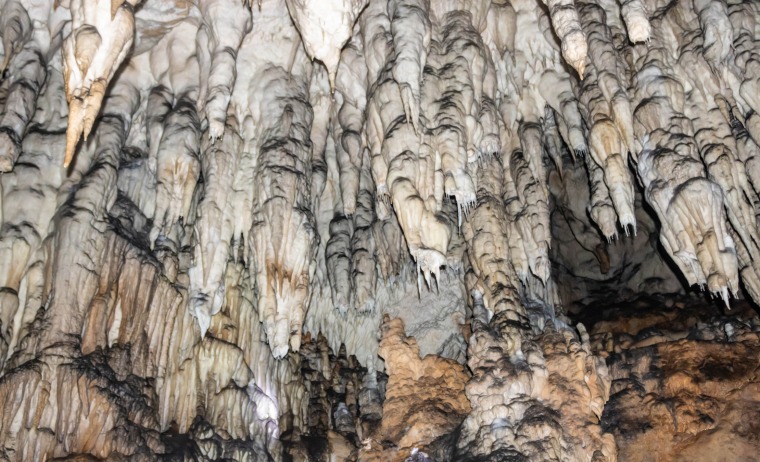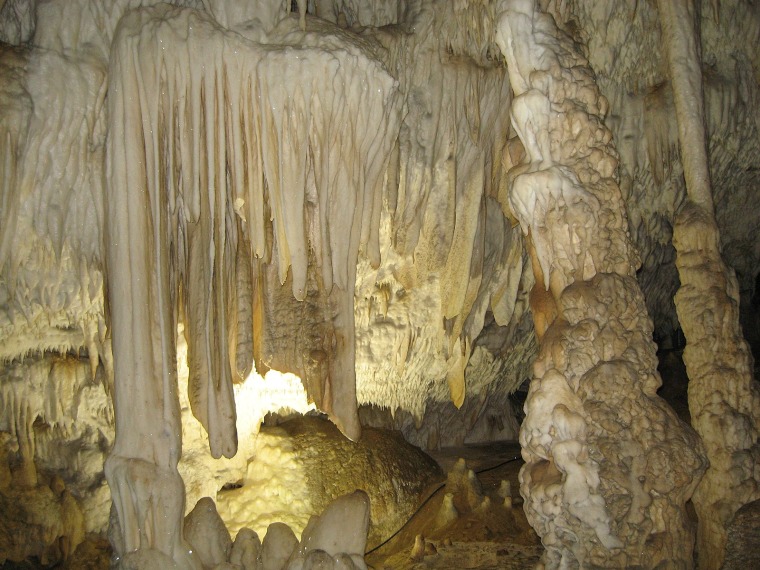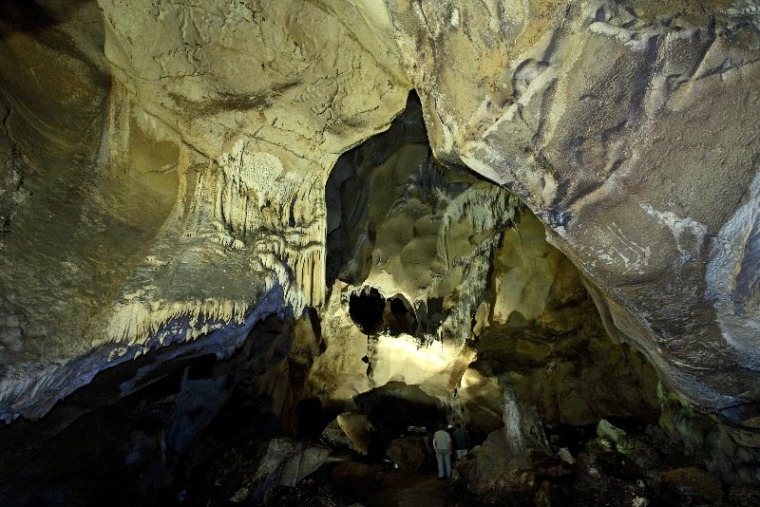Subterranean rivers have created the Potpeće cave that was inhabited even during the Neolithic period. Its ornaments are very rare in karst caves.
If you believe that a horseshoe will bring you luck, than a visit to the Potpeće cave, a nature monument and the most significant cave site in Western Serbia, will be a true treat for you. The cave has a horseshoe shaped entrance that was carved into limestone by the force of water.
The Potpeće cave is located near the village of Potpeće, near the town of Užice, on the right bank of the Great Morava. The cave is near the highway, and yet hidden from hungry eyes of passers-by. It is one of five caves in Serbia that are prepared for tourist visits.
The entrance to the Potpeće cave is one of the biggest in the Balkans. It is over 50 meters high and 12 meters wide at the bottom and even 22 meters wide at the top, thus making it the true wonder of nature.
The explored section of the cave, with paths, is 555 m long, The path leading in and out of the cave has over 700 steps. It is interesting that this cave has no name. The name “Potpeće” actually comes from the name of the nearby eponymous village, that was, on the other hand, named after the cave – “the village beneath the cave”.
The Potpeće cave is an erosional cave, formed by the waters of subterranean rivers which descend underground in the Drežnik valley and follow an underground course to re-emerge from the cave or from springs in front of the cave, to create two kilometers long Petnica cave river. The cave comprises two levels of channels: the older – the Upper Cave and the more recent – the Lower Cave.

Once a river was running through the upper part of the Potpeće cave and forming a waterfall, while the lower part was inhabited. After the wall between two levels collapsed under the weight of water, the river entered the lower level and people struggled with rocks and inhabited the upper level, but abandoned it not long after due to the difficult access.
Archaeological remains of ceramics, used deer antlers and stone tools were found in the Potpeće cave testifying that the cave was inhabited by the people from the Neolithic period. It is also believed that Serbs used to hide in the cave during the Turkish rule. These conclusions were supported by the fact that crosses covered by calcite and human remains were found deep in the cave.
The average annual temperature in the cave is around 9 degrees and the experts say that the stalactites and stalagmites of the Potpeće cave are rare in karst caves. These cave decorations carved by the millennia bear unusual names such as “Coil”, “Octopus”, “Palm”, “Snow white and the seven dwarfs”, while one of the cave halls is called “Jovan Ćvijić and speleologists”.
The white see-through stalagmite formation is called “Bridal veil”, the 3,5 meters high pillar was named “Don Quixote”. There are also “Macaroni hall”, “Dragon’s hall”, “Bats’ passage”…
Today visitors leave coins for good luck in an opening in the main hall of the Potpeće cave.
How to get to the Potpeće cave?
From the direction of Belgrade to reach the oddly shaped Potpeće cave, take the highway to Montenegro and halfway between Požega and Užice (between the villages Uzići and Gorjani) in the vicinity of the Uzići train stop exit the highway and an asphalt road will take you to this cave.
A railroad passes through this part of the country so it is also possible to come here by train. If you are coming by bus, we suggest you go to Užice or Požega where you can catch a local bus or a taxi to the cave.
When you are already here, don’t miss…
Going to Zlatibor and being amazed by one of the most beautiful mountains of Serbia. If you decide to stay, beside idyllic landscapes, expect good nightlife and traditional Serbian cuisine with all its specialties: prosciutto, kajmak, sour cream and “komplet lepinja” (a kind of a bun with eggs and kajmak covered with gravy).
You shouldn’t leave this region without seeing the old Sirogojno village, a true museum in the open, and Mokra Gora with its rail “Šargan eight” that you can ride on an old “Ćira” train.
If you find yourself here in July, don’t miss the Zlatibor Brass festival which traditionally gathers some of the best trumpet players from Serbia, as well as many guests from the country and abroad. It also serves as a pre competition for the Guča Brass festival which is taking place 43km away from Zlatibor. This trumpet festival is also held towards the end of July.
In January, in Mokra Gora, visit “Kustendorf “, a film and music festival created by the famous film director Emir Kusturica.
If you are a fan of good meat, and find yourself in this region in mid January, don’t miss the “Pršutijada” (Prosciutto fest), held in the village of Mačkat on Mt. Zlatibor.
Related Articles

Ledenа Pećina in Uvac: Serbia’s Frozen Jewel
October 22, 2024










